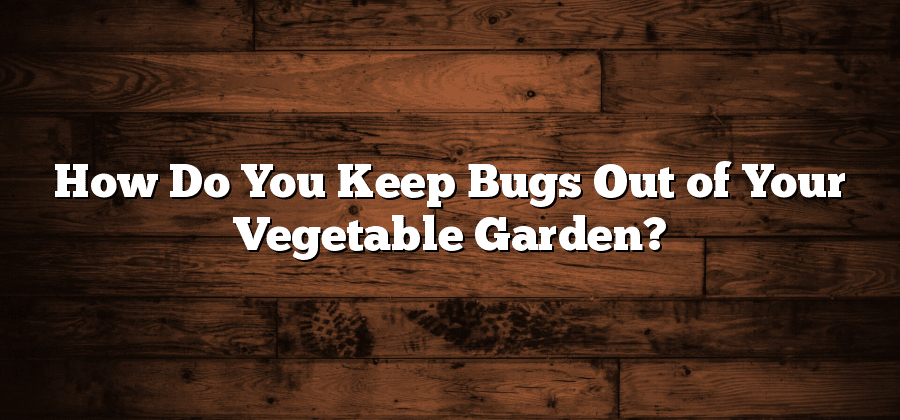Identifying Common Garden Pests
Gardening can be a rewarding and fulfilling hobby, but it doesn’t come without challenges. One of the biggest challenges gardeners face is dealing with common pests that can wreak havoc on their plants. Identifying these pests early on is crucial in order to effectively control and minimize potential damage to your garden.
Some of the most common garden pests include aphids, whiteflies, snails, and slugs. Aphids are small insects that suck the sap from plants, causing them to wilt and stunt their growth. Whiteflies, on the other hand, are tiny flying insects that feed on the underside of leaves, resulting in yellowing and withering foliage. Snails and slugs are notorious for their appetite for tender leaves, leaving behind obvious trails of slime as they devour your plants. By familiarizing yourself with the appearance and behavior of these pests, you will be better equipped to take immediate action and prevent them from causing further damage to your beloved garden.
Choosing Resistant Vegetable Varieties
When it comes to protecting your vegetable garden from pests, one effective strategy is to choose resistant vegetable varieties. Resistant varieties are specifically bred to have natural defenses against common pests and diseases, reducing the need for chemical interventions. By selecting these varieties, you can minimize the risk of infestations and maximize your chances of a successful harvest.
When selecting resistant vegetable varieties, it is important to consider the specific pests and diseases prevalent in your area. Different varieties have varying degrees of resistance, so it is important to choose ones that match the challenges you are likely to face. Research local pest and disease patterns and consult with local gardening experts or extension services to determine which resistant varieties are most suitable for your region. By taking this proactive approach, you can save yourself time, effort, and potentially the loss of your crop to destructive pests.
• Research local pest and disease patterns to determine which resistant varieties are suitable for your region
• Consult with local gardening experts or extension services for advice on resistant vegetable varieties
• Choose varieties that match the specific pests and diseases prevalent in your area
• Select varieties with varying degrees of resistance, depending on the challenges you are likely to face
• By choosing resistant vegetable varieties, you can reduce the need for chemical interventions and minimize the risk of infestations
• Increase your chances of a successful harvest by selecting resistant vegetable varieties.
Implementing Proper Crop Rotation
Crop rotation is a widely adopted practice among gardeners and farmers to maintain soil health and minimize pest and disease problems. By strategically alternating the crops in designated planting areas each growing season, growers can effectively disrupt pest life cycles and reduce the buildup of soil-borne pathogens. This method involves grouping plants with similar nutritional needs and growth habits into specific rotation sequences, usually spanning a three to four-year cycle.
The primary goal of implementing proper crop rotation is to achieve balanced nutrient profiles and minimize the risk of nutrient depletion or excess in the soil. Different crops have varying nutrient requirements, and rotating them helps to prevent the exhaustion of specific nutrients that certain plants heavily rely on. Additionally, this practice can enhance soil structure and fertility, reduce soil erosion, and suppress weeds. By diversifying the plant species grown over time, farmers and gardeners can maintain optimal soil health and productivity.
Using Physical Barriers and Netting
One effective method for protecting your garden from common pests is the use of physical barriers and netting. These barriers can create a physical barrier between pests and your plants, preventing them from causing damage. Netting, in particular, can be useful for keeping out flying pests such as birds and insects.
When using physical barriers and netting, it is important to choose the right materials for your specific needs. Consider the type of pests you are dealing with and the size of the plants you are trying to protect. Ensure that the netting or barrier is tightly secured around the plants, with no gaps or holes for pests to sneak through. Regularly inspect your barriers and netting for any signs of wear or damage, and make necessary repairs to maintain their effectiveness.
Implementing physical barriers and netting in your garden can be an efficient and environmentally friendly solution to protect your plants from pests. Consider incorporating this method as part of your pest management strategy, alongside other approaches, such as crop rotation and encouraging beneficial insects.
Encouraging Beneficial Insects
One effective way to enhance your garden’s pest control is by encouraging beneficial insects. These insects are natural predators that feed on common garden pests, helping to maintain a healthier and more balanced ecosystem in your garden. By creating an inviting environment for these beneficial insects, you can reduce the need for chemical pesticides and promote a more sustainable approach to gardening.
To attract beneficial insects, it is important to provide them with the resources they need to thrive. Planting a diverse range of flowering plants throughout your garden will not only add beauty but also attract beneficial insects with their nectar and pollen. Aim for a variety of flower shapes and colors to appeal to different types of beneficial insects. Additionally, consider incorporating plants that provide shelter, such as native grasses or perennial herbs, which can provide hiding places and nesting sites for beneficial insects. By promoting a welcoming habitat, you can increase the presence of these beneficial creatures in your garden and enjoy the benefits they bring.






